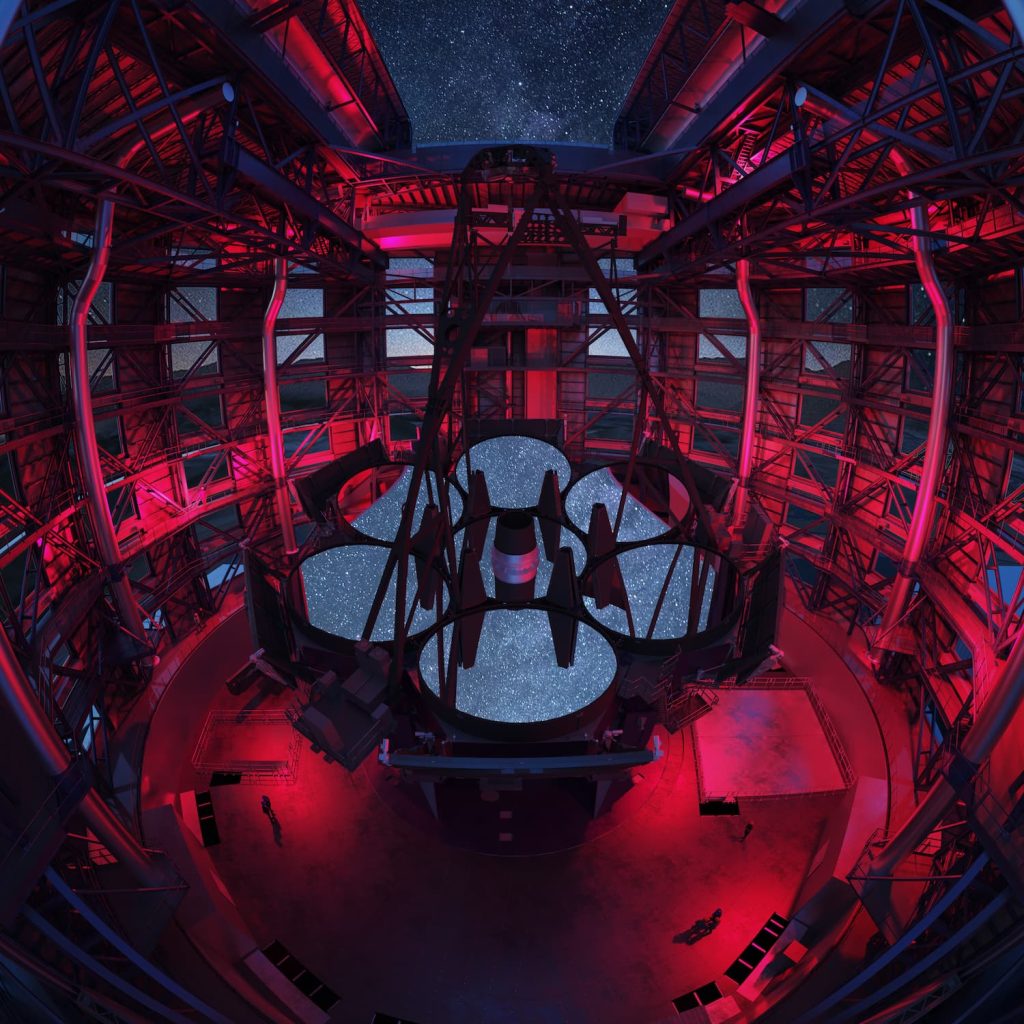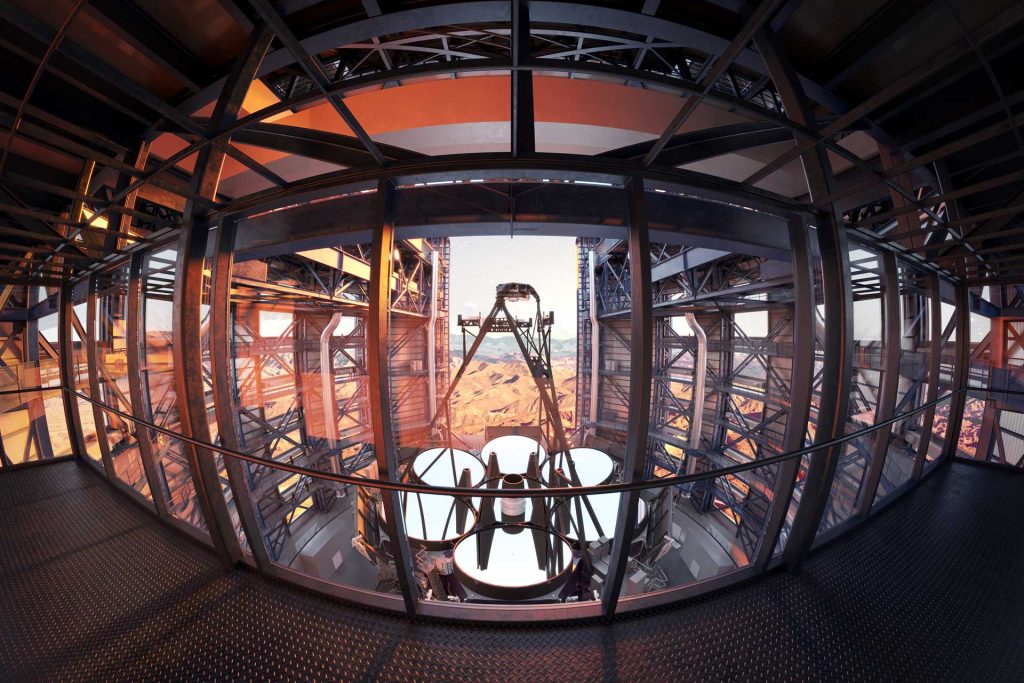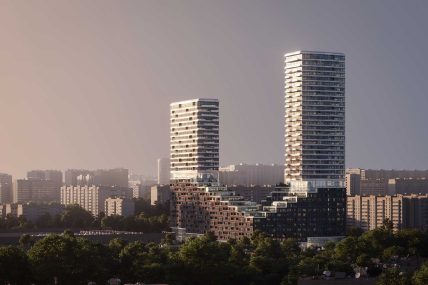Giant Magellan Telescope
Architectural Visualizations for the Most Powerful Ground-Based Telescope Ever Engineered
Peeking into a black hole
American scientists asked investors all over the world for the funding of the Giant Magellan, a new multibillion-dollar telescope that would be more powerful than any other telescope that is currently looking for answers in the night sky. It consists of seven of the world’s largest mirrors, each measuring 8.4 meters in diameter and together weighing a staggering 17 tons.
Thanks to its extraordinarily high image resolution, we will have an unprecedented view of the universe, ten times more detailed than that of the legendary Hubble Space Telescope meaning that we will get the chance to see even deeper into the cosmos than ever before. The telescope is on a mission to look for habitable worlds and signs of life beyond our home planet, helping us understand more the phenomenon of dark matter and attempting to aid scientists to solve the yet unknown mysteries of the formation of celestial objects, galaxies and black holes.
These visualizations are rare, one-of-a-kind opportunities to our architectural studio. Let us show you why the Giant Magellan project was truly one of the most exciting things that could happen to us this year.
Optimizing a complex model
GMT provided the current telescope design in 3D format. Our client was looking to update the old 3D model, used in the previous 7-year-old animation, because the design had gone through significant changes since.
They needed ZOA to create a more realistic imagery of the new telescope and its surroundings in the Atacama desert that works well with parallax scrolling on their site.
One of the most challenging tasks here was to handle the telescope’s complicated 3D model which required a team of our most experienced artists to handle these files and work with them in the programs we use on a daily basis. They felt like the number of small parts the telescope has could easily represent the amount of stars it will observe in its lifetime. For a complex structure like this, every nut and bolt had to be carefully designed, consequently, we had to show them and do so very accurately in our images, especially in the close-up details shots.
We were constantly modifying and optimizing the model even further as we were creating the images, cinemagraphs and architectural animations ordered by the client, just to speed up the work process and keep up with deadlines.
Green light for construction
The funding for the 30-meter tall, ground-based Giant Magellan Telescope arrived this summer and $500 million was raised to kickstart the construction.
It is set to be fully operational by 2024 and is backed by 11 institutions from places like Australia, Brazil, Chile, Korea, and the United States.
Rare conditions
Our artistic renderings and mini-animations show what the telescope will look like when it’s fully assembled on Cerro Las Campanas in Chile, where the dry and clear weather is ideal to observe the night sky for up to 300 nights a year.
There are a lot of misconceptions about the desert. People often think of it as always hot, boring and completely devoid of life. However, they come in all shapes and forms with rare landscape characteristics presenting different colours, varying temperature ranges and hardy flora and fauna.
The very particular weather and light conditions in which the telescope will operate have made the project a really special challenge to our artists. One of the reasons for that is because for us, living on the northern hemisphere of our planet meant that we had to literally flip the sky we’re used to in Europe and had to show a whole different range of star constellations that presents itself only on the southern hemisphere.
We also had to adjust the light conditions that we are accustomed to, so it is realistic and matches the desert: a day image is brighter with the beautiful warm colours of the sand and rocks and a night render is even more crispy and clear-skied with millions of small dots as stars and a glimpse of our home galaxy, the Milky Way that is very rarely visible in any slightly more populated area due to air and light pollution.
Interactive experience
Our company, inspired by these unique conditions, have presented many sketch images increasing the number of options for our client. In the end, it was the responsibility of four talented artists to create the final package which meant the making of a total seven realistic images and 20 high-detail technical images and a total of 92 seconds of animated sequences.
Our aim was not only to enchant investors in the hope to raise funds for the construction, but also to get scientists excited and get them to add research with the telescope to their wishlist. It surely generated a buzz in the mainstream media and news outlets, making people all over the world aware of this important project. Our work is now placed on the GMTO website, providing a great visual explanation of the telescope for people in the science community, science enthusiasts and the general public who were longing to see what the telescope will look like.
Our freshly made animations and renderings played a big role in their new website overhaul. These renderings will also be featured across all of their visual communications, materials for fundraising, press, outreach and education and social media.
Project details
Location
Las Campanas Peak, Chile
Partner
Team
Róbert Andrékó
Bence Falussy
Krisztina Sárdi
Fabio Tavola
Links


